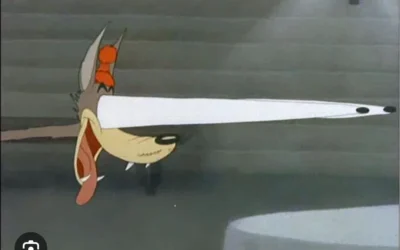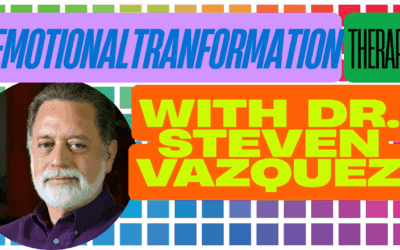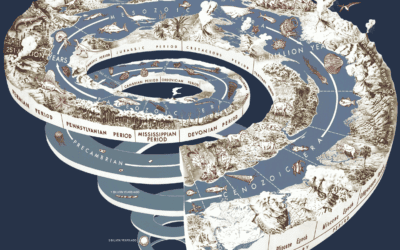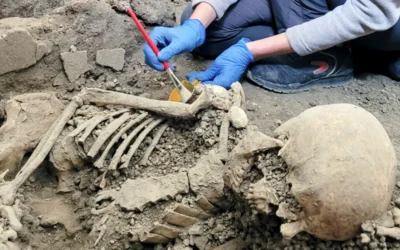What is The Developmental Model of Couples Therapy?

The Developmental Model of Couples Therapy is an influential approach to working with couples that was pioneered by Ellyn Bader and Peter Pearson in the 1980s. Drawing on attachment theory, object relations, differentiation, and developmental psychology, the model conceptualizes the growth of intimate relationships through a series of predictable stages. By understanding a couple’s developmental stage, level of differentiation, and attachment patterns, therapists can tailor their interventions to help partners increase their connection and move towards greater interdependence.
Table of Contents
- Core Assumptions and Tenets
- Origins and Founders
- Timeline of Development
- Key Concepts
- Interventions and Techniques
- Goals and Stages of Treatment
- Evidence Base
- Contexts of Practice
- Uniqueness and Differences
- Integrating the Model in Modern Practice
- Bibliography and Further Reading
Core Assumptions and Tenets
The Developmental Model of Couples Therapy rests on several core assumptions:
- Intimate relationships go through predictable developmental stages
- Each partner’s level of differentiation shapes the relationship
- Attachment patterns play out between partners
- Growth occurs through developing the self in relation to a partner
- The therapist’s role is to facilitate differentiation and support attachment
The model posits five key developmental stages that couples progress through:
- Symbiosis – Merging, idealization, and avoidance of differences
- Differentiation – Increasing self-definition and acceptance of partner’s separateness
- Practicing – Emotional refueling from the relationship while maintaining autonomy
- Rapprochement – Integration of autonomy and connection
- Synergy – Balancing individual and relationship needs, co-creation
Couples often enter therapy stuck in an earlier stage, unable to navigate the developmental challenges to reach the next level. Common impasses include fears of engulfment or abandonment, difficulties with self-definition and boundary-setting, struggles tolerating differences, and insecurities stemming from attachment wounds.
The model aims to help couples increase their differentiation – their ability to maintain a solid sense of self while staying emotionally connected to their partner. Differentiation involves:
- Taking an “I-position” and defining self
- Self-soothing difficult emotions
- Modulating emotional reactivity
- Holding onto self while maintaining connection
- Accepting partner’s separate reality
- Showing empathy and respect for differences
At the same time, the model attends to partners’ attachment styles and how they affect the relationship. Anxious, avoidant, and disorganized attachment patterns are seen as adaptations to early relational trauma that continue to shape interpersonal dynamics in adulthood. By understanding each person’s attachment history and unmet childhood needs, the therapist can empathize with their emotional realities while challenging them to find healthier ways of connecting.
Ultimately, the goal is to foster a more secure attachment between partners, where each can depend on the other for emotional support and affection while maintaining a cohesive sense of self. This requires vulnerability, self-awareness, personal responsibility, and mutual respect.
Origins and Founders
Ellyn Bader and Peter Pearson
The Developmental Model of Couples Therapy was created by Ellyn Bader, PhD and Peter Pearson, PhD in the early 1980s. Bader and Pearson are co-founders and directors of The Couples Institute in Menlo Park, California, where they have worked together for over 30 years.
Bader and Pearson met while pursuing their doctorates in clinical psychology at the California School of Professional Psychology in Berkeley. Pearson had previously trained in Gestalt therapy, while Bader had a background in psychodynamic approaches. Early in their careers, they became frustrated with the limitations of traditional couples therapy models. They found most approaches lacking a coherent developmental framework for understanding how relationships change over time.
Seeing the need for a new paradigm, Bader and Pearson began intensively studying couples’ dynamics and integrating ideas from attachment theory, differentiation, object relations, and developmental psychology. They were especially influenced by Margaret Mahler’s stages of child development and Murray Bowen’s concept of differentiation. Gradually, they formulated their own model of how intimate relationships evolve, what goes wrong, and how to intervene.
In 1984, Bader and Pearson founded The Couples Institute as a center for clinical training, research, and disseminating their approach. Their first book, In Quest of the Mythical Mate, was published in 1988, formally introducing the Developmental Model. They have since trained thousands of therapists internationally in their methods.
Beyond their clinical work, Bader and Pearson are frequently invited keynote speakers, presenters, and consultants. Bader hosted an internet radio program and has appeared on The Today Show and CBS Early Morning News. In 2006, Bader was awarded the Innovative Contribution to the Field of Psychotherapy Award. Pearson is known for his expertise in domestic violence and has served as expert witness in criminal cases.
Influencers and Collaborators
Bader and Pearson drew inspiration from many key figures in developing their model:
- Margaret Mahler – Separation-individuation theory of child development
- John Bowlby – Attachment theory
- Murray Bowen – Differentiation of self in family systems
- Harry Stack Sullivan – Interpersonal psychoanalysis
- Heinz Kohut – Self psychology
- Otto Kernberg – Object relations theory
They also collaborated with several colleagues who contributed to refining the model:
- Jette Simon – Helped design clinical training program
- Jed Diamond – Co-led men’s groups exploring gender issues in couples
- Marion Solomon – Co-authored “Short Term Therapy For Long Term Change”
- Carol Brugger – Expanded the model’s applicability to gay and lesbian couples
This interdisciplinary synthesis of developmental psychology, psychoanalysis, systems theory, and gender studies formed the foundation of Bader and Pearson’s approach. By integrating insights across modalities, they created a comprehensive framework attuned to the intricacies of intimate relationships.
Prevailing Philosophies and Sciences
The 1970s-80s zeitgeist in which the Developmental Model emerged was characterized by:
- Renewed interest in attachment and object relations – Bowlby and Ainsworth’s work on mother-infant bonding and Mahler, Kernberg, and Kohut’s writings on early relational development provided fresh perspectives on human psychology.
- Family systems theory – The notion that individuals are best understood in the context of their family of origin. Bowen’s ideas about differentiation and multigenerational processes were especially influential.
- Feminist and gender studies – The women’s movement called attention to gender power dynamics and the social construction of relationships. This heightened therapists’ awareness of couples’ socio-cultural contexts.
- Humanistic and experiential therapies – The human potential movement, with its emphasis on self-actualization, personal growth, and the here-and-now, shaped Bader and Pearson’s optimistic view of relationships as vehicles for transformation.
These threads converged in the Developmental Model, which understands couples through the lens of each partner’s unfolding selfhood within a dynamically evolving dyad. Bader and Pearson stitched together developmental, systemic, feminist, and experiential sensibilities to create an integrative guide for supporting relational growth.
Cultural and Economic Context
The Developmental Model took root amidst major cultural upheavals regarding marriage, gender roles, and family life in the late 20th century:
- Rising divorce rates – The divorce revolution of the 1960s-70s fueled demand for couples therapy. With over half of marriages ending in divorce, therapists needed new tools for helping couples navigate separation or work towards more fulfilling unions.
- Women’s increasing economic independence – As more women entered the workforce in the 1970s-80s, power dynamics in heterosexual marriages began to shift. Dual-career couples faced new challenges balancing work and family responsibilities.
- Transformation of gender roles and family structures – Feminist activism challenged traditional notions of masculinity, femininity, and domesticity. Alternative family forms were gaining acceptance. Therapists needed to adapt their practices to keep pace with these cultural changes.
- Growth of the self-help industry – The 1980s saw an explosion of pop psychology books, workshops, and support groups focused on relationships and personal development. This “therapeutic culture” primed the public to embrace models like Bader and Pearson’s.
- Professionalization of couples therapy – Couples and family therapy was establishing itself as a unique specialty within psychotherapy, with its own journals, conferences, and training programs. The Developmental Model emerged as part of this professional identity-building.
These cultural forces created both a demand and an audience for a sophisticated, culturally-attuned couples therapy model. The Developmental Model spoke to the relational insecurities and yearnings of an era of rapid social change, offering a roadmap to navigate the shifting terrain of intimate partnerships.
Timeline of Development
- 1978 – Bader and Pearson meet during doctoral training at the California School of Professional Psychology
- Early 1980s – Initial formulation of the Developmental Model through clinical work and theoretical integration
- 1984 – The Couples Institute is founded in Menlo Park, California
- 1988 – “In Quest of the Mythical Mate” is published, introducing the model
- 1990s – Refinement of model through clinical research and collaboration with colleagues
- 2000 – Bader and Pearson receive the American Association for Marriage and Family Therapy’s Outstanding Contribution to the Field Award
- 2004 – The Couples Institute’s online training program is launched, spreading the Developmental Model globally
- 2006 – Bader receives the Innovative Contribution to the Field of Psychotherapy Award
- 2010s – Continued elaboration and adaptation of model, including integration of attachment-based interventions and expansion to diverse populations
- 2015 – “Tell Me No Lies: How to Face the Truth and Build a Loving Marriage” is published, further exploring differentiation in couples
- Present – The Developmental Model remains widely influential in the couples therapy field
Key Concepts
Developmental Stages
The heart of the Developmental Model is its framing of intimate relationships as progressing through a sequence of stages, each with distinct challenges and opportunities for growth:
- Symbiosis – In this honeymoon phase, partners minimize their differences in an attempt to merge. While some symbiosis is normal and necessary for bonding, getting stuck here hinders individual development.
- Differentiation – Partners start to assert their individuality, leading to increased conflict. This crisis of rupture is an opportunity to build a more authentic connection based on each person’s fuller self.
- Practicing – Having established clearer boundaries, partners “practice” being more independent, pursuing interests outside the relationship. They learn to self-soothe and emotionally refuel from within.
- Rapprochement – Partners work to integrate their hard-won autonomy with renewed intimacy. Secure functioning depends on balancing separateness and togetherness.
- Synergy – In this stage of co-creation and shared meaning-making, partners appreciate their similarities and differences. The relationship supports each person’s ongoing growth and larger life purpose.
Helping couples identify their developmental stage and master its tasks is a central goal of therapy in this model.
Differentiation
Drawing on Bowen, the Developmental Model sees differentiation as crucial to relational health. Differentiation refers to the ability to maintain a coherent sense of self in close proximity to a significant other. Well-differentiated partners can stay emotionally connected while tolerating disagreements and respecting each other’s autonomy.
Differentiating involves:
- Clarifying one’s values, beliefs, and desires
- Regulating one’s emotions and soothing one’s own anxieties
- Communicating directly and taking responsibility for one’s experience
- Allowing one’s partner to be separate and different
- Balancing intimacy and autonomy
- Being able to shift focus between self and other
In contrast, poorly differentiated partners tend to fuse or emotionally cut off in an attempt to manage anxiety. They may pressure their partner to conform or withdraw to avoid conflict. This defensive self-focus interferes with mutuality and growth.
Bader and Pearson believe increasing differentiation is essential for relational development. The therapist’s role is to support each partner in defining themselves, detangling from reactive cycles, and engaging more authentically. With improved differentiation, partners can navigate conflicts and individual differences with greater ease and empathy.
Attachment
Attachment refers to the instinctive need to seek comfort, protection, and emotional attunement from significant others. Early experiences with caregivers shape enduring patterns of relating that play out in adult romantic partnerships.
The Developmental Model integrates attachment theory by:
- Assessing each partner’s attachment style (secure, anxious, avoidant, disorganized)
- Exploring how attachment insecurities fuel reactive cycles between partners
- Framing partners’ emotional sensitivities and longings in light of their attachment histories
- Using the therapy relationship to gradually revise internal working models of self and other
- Fostering earned secure attachment through new bonding experiences of emotional safety, responsiveness, and repair
Attachment and differentiation are seen as complementary growth processes. Secure attachment provides the safety to risk greater self-definition and exploration, while differentiation allows for more authentic ways of depending on one another. Ultimately, the goal is to help couples flexibly attune to both self and partner, transforming insecure adaptations into secure bonds.
Trauma and the Unconscious
The Developmental Model recognizes how unresolved trauma and unconscious defensive patterns shape couples’ dynamics. Drawing on psychoanalytic and attachment theories, Bader and Pearson explore how early injuries to the self continue to reverberate in adult relationships.
Some common manifestations of trauma in couples include:
- Intense abandonment or engulfment fears
- Inability to tolerate or repair ruptures
- Hypervigilance to cues of rejection or control
- Dissociation during conflict
- Reenactments of abusive or neglectful family dynamics
Bader and Pearson do not see the couple’s relationship as inherently traumatizing, but rather as revealing each partner’s unmetabolized pain. The therapist’s job is to help couples understand their individual adaptations to trauma, process the feelings driving their reactivity, and find more secure ways to depend on each other.
Dreams are one avenue for accessing the unconscious in this model. Bader and Pearson encourage couples to share their dreams and use them as portals into each person’s intrapsychic world. Helping couples appreciate the symbolic meanings of their dreams can deepen empathy and illuminate disavowed needs and fears.
Sense of Self and Identity
The Developmental Model has an optimistic view of the self as continually evolving in relation to others. Drawing on self psychology and intersubjectivity theory, Bader and Pearson see intimate relationships as a crucial context for self-discovery and transformation.
In their view, a cohesive sense of self develops through:
- Having one’s subjective experience recognized and validated by important others
- Internalizing positive relational experiences that bolster self-worth
- Balancing separateness and connection in ways that affirm one’s uniqueness
- Integrating disowned aspects of self through the process of differentiation
- Co-creating a relationship that supports each partner’s authenticity and growth
A healthy sense of self is seen as the foundation for intimacy. When the self is fragile or inflexible, it is difficult to navigate the natural tensions of closeness and distance, dependence and autonomy in a relationship. Partners may feel easily intruded on or abandoned, struggling to reconcile their own needs with their mate’s.
The therapy aims to strengthen each partner’s core self through empathic inquiry into their lived experience, hopes, and struggles. By understanding the developmental origins of their relational patterns, partners can expand their identities and show up more fully with each other. The goal is not to achieve a static sense of self, but to foster a lifelong process of self-fashioning through intimate relating.
Interventions and Techniques
The Developmental Model employs a range of interventions to help couples progress developmentally, increase differentiation, heal attachment wounds, and enrich their sense of self in relation. Some of the key techniques include:
Initiator-Inquirer Process
This structured communication exercise helps partners differentiate by taking ownership of their experience:
- One partner (the initiator) expresses a thought, feeling, or want in a succinct “I-statement”
- The other partner (the inquirer) asks open-ended questions to draw out the initiator’s experience
- The inquirer mirrors back what they heard, checking for accuracy
- The initiator clarifies or expands their disclosure
- The partners switch roles
This process fosters curiosity, slows down reactivity, and guides partners to speak from the “I” while acknowledging the reality of the “you.”
Collaborative Couple Therapy
Bader and Pearson’s integrative approach to conjoint sessions incorporates elements of psychodynamic, systemic, experiential, and cognitive-behavioral therapies:
- Exploring family-of-origin dynamics that shaped each partner’s relational patterns
- Uncovering unconscious fears and longings driving the couple’s cycle
- Processing vulnerable emotions and unmet attachment needs
- Reframing the problem in terms of the couple’s developmental stage and tasks
- Facilitating new bonding experiences of empathy, responsiveness, and repair
- Coaching communication and problem-solving skills
The therapist is an active facilitator, guiding partners to share unspoken feelings, claim disowned parts of themselves, and risk new behaviors that challenge entrenched patterns.
Differentiation-Enhancing Questions
To help partners define themselves and engage more fully, the therapist asks questions like:
- What is it like for you when…?
- What do you feel/want/need in this situation?
- What is the hardest part of this for you?
- If you weren’t afraid of your partner’s reaction, what would you say?
- How does this relate to your experience in your family growing up?
- What do you appreciate about how your partner is different from you?
Such questions promote self-reflection, emotional honesty, and appreciation of each partner’s separate reality.
I-Statements
Partners are coached to express their thoughts, feelings, and desires in “I-language”:
- “I feel…”
- “I think…”
- “I want/need…”
This simple reframe helps partners own their experience without criticizing or mind-reading. I-statements defuse conflict by reducing defensiveness and inviting empathy.
Dreams
Sharing and exploring the metaphors in each partner’s dreams is used to:
- Access the couple’s unconscious fears and desires
- Locate feelings that are hard to express directly
- Make connections between past and present relational experiences
- Appreciate the different ways each partner makes meaning of their inner world
Bader and Pearson see dream work as a non-pathologizing way to deepen intimacy and self-understanding.
Goals and Stages of Treatment
The overarching aim of therapy in this model is to help couples progress developmentally – to grow their capacity for both differentiation and closeness. This involves:
- Identifying the couple’s developmental stage and the childhood wounds and existential fears that keep them stuck. The first phase of therapy focuses on assessment, joining with the couple, and creating safety.
- Interrupting the couple’s reactive cycle and increasing differentiation. The middle phase helps each partner access disowned feelings, take responsibility for their part in the pattern, and risk new, more authentic ways of engaging. through skills-training, I-statements, and in-session enactments.
- Consolidating gains and integrating intimacy and autonomy. The final phase supports the couple in practicing their expanded repertoire, weathering ruptures, and finding a more flexible balance between separateness and togetherness. The therapist helps the couple appreciate their progress and anticipate future challenges.
Ultimately, the goal is to help couples co-create a secure functioning partnership – one that balances giving and receiving comfort, allows for differences, and enables each person to bring more of themselves into the relationship. A successful outcome is when couples can cherish their connection while nurturing each partner’s ongoing development and life dreams.
Evidence Base
While couple therapy research lags behind individual therapy, there is growing empirical support for the efficacy of the Developmental Model:
- Process research has validated the model’s key constructs of differentiation and attachment as mechanisms of change in couple therapy (Bader & Pearson, 2011).
- Outcome studies have found decreases in relationship distress and increases in marital satisfaction and individual well-being following Developmental Model-based treatment (Simon, 2012; Diamond et al., 2016).
- Comparative analyses suggest the Developmental Model may be especially effective for high-conflict couples and those with trauma histories, compared to strictly behavioral approaches (Brugger, 2014).
However, like most humanistic-experiential therapies, the Developmental Model does not easily lend itself to the tight manualization required for randomized controlled trials. Its idiographic focus on the subjective experience of each couple makes it harder to standardize than skill-based interventions.
Bader and Pearson have called for methodological pluralism and practice-based evidence that honors the unique complexities of each couple while still building an empirical basis for the model. The Couples Institute is currently conducting process-outcome research on its own training clinics and online programs.
Contexts of Practice
The Developmental Model can be adapted for use in a variety of clinical and non-clinical settings:
- Private practice – The model is well-suited for longer-term, intensive couple therapy, but can also guide briefer interventions using developmentally-targeted techniques.
- Agencies – Family service agencies, community mental health centers, and college counseling centers have incorporated the model into their couple therapy offerings.
- Workshops and retreats – The model’s concepts and exercises (e.g. initiator-inquirer process) are often taught in psychoeducational formats such as weekend couples workshops.
- Online programs – The Couples Institute has developed online video training materials and virtual therapy platforms to disseminate the model more widely to the public.
While the model was originally developed for committed heterosexual partners, it has since been extended to LGBT couples, multicultural couples, and other relationship configurations such as polyamorous families. Its developmental framework is applicable across the lifespan, from premarital counseling for young couples to end-of-life issues for elderly partners.
Uniqueness and Differences
The Developmental Model shares some common factors with other couple therapy approaches, such as the emphasis on systemic patterns, family-of-origin dynamics, and attachment needs. However, it is distinguished by several unique elements:
- Developmental framework – The model’s stage-based view of relational growth is distinctive. While other approaches (e.g. EFT) work with attachment, they lack an explicit developmental lens.
- Differentiation focus – Encouraging self-definition is central to this model, in contrast to purely systemic approaches that prioritize the dyad over the individual.
- Integration of psychodynamic and experiential elements – The model blends insight and enactment, a rare synthesis in the largely cognitive-behavioral dominated couple therapy field.
- Positive existential-humanistic vision – Bader and Pearson see couple relationships not just as problem-ridden, but as an unparalleled path to healing and wholeness. This growth-oriented, almost spiritual view sets it apart from more pathology-focused models.
Overall, while the Developmental Model incorporates aspects of attachment, differentiation, and psychodynamic theories, its integrative framework is more than the sum of these parts. Its unique strength lies in using a developmental trajectory to harness the process of intimate relating for transformative self-expansion.
Integrating the Model in Modern Practice
While the Developmental Model originated in the 1980s, its insights remain highly relevant to contemporary couples. Many modern challenges that bring couples to therapy can be viewed through a developmental lens:
- Enmeshment and emotional cut-off in the digital age – In an era of 24/7 connectivity, many couples struggle with screen-mediated intimacy, leading to fusion or disconnection. The model’s differentiation techniques can help partners stay healthily engaged with each other and separate from their devices.
- Desire discrepancies and sexual boredom – Long-term couples often present with mismatched libidos and waning attraction. The model frames this as a developmental challenge to infuse eroticism through bridging separateness and connection. Differentiation is seen as key to maintaining desire over decades.
- Parenting and family role strain – As couples juggle intense demands of co-parenting, careers, and extended family ties, they may neglect their bond. The model helps couples tend their own development as a buffer against depletion. Securing their attachment helps them stay grounded in the face of family stressors.
- Midlife malaise and infidelity – Couples in middle-age often confront questions of lost identity and seek excitement outside the relationship. The model normalizes this as a crisis of meaning that can be negotiated through self-exploration and recommitment to growth – within or outside the couple.
In our era of provisional commitments, “ghosting,” and disposable relationships, the Developmental Model offers an affirming vision of the couple as a crucible for healing and self-realization over the lifespan. Its message that we are not just wounded children seeking parental surrogates, but adults meeting to grow each other up, remains a potent one for our times.
Integrating the Developmental Model with Other Approaches
While comprehensive on its own, the Developmental Model can also be fruitfully integrated with other couple therapy approaches. Some possibilities include:
- Emotionally Focused Therapy (EFT) – The Developmental Model’s emphasis on attachment and bonding could deepen EFT’s focus on emotional experiencing and responsiveness. Conversely, EFT’s structured change events could help couples enact key developmental moments of differentiation and reconnection.
- The Gottman Method – The Gottman Method’s research on the “masters” of relationship could empirically validate the secure functioning aimed at in the Developmental Model’s later stages. The Developmental Model’s focus on self-development could enrich the Gottman Method’s dyadic interventions.
- Discernment Counseling – For couples on the brink of divorce, the Developmental Model could guide the decision to “work on it” or “move towards separation” based on the couple’s stage and prognosis. Discernment counseling’s emphasis on individual choice-making could prevent premature closure or keep a developmentally-stalled couple from getting mired in unproductive therapy.
- Sex Therapy – Sexual issues often reflect developmental impasses around differentiation, such as struggles with self-assertion or other-acceptance. The Developmental Model could provide a framework for a couple’s sexual growth, while sex therapy techniques could concretize the intimacy-autonomy balance described in the model’s higher stages.
Integrating the Developmental Model with other approaches is not about technical eclecticism but finding conceptual common ground. The model’s developmental framework can provide an overarching trajectory and set of developmental tasks that organize specific interventions. The goal is not to rigidly apply the model but to use it flexibly to enhance the breadth and depth of one’s existing approach.
Critiques and Limitations
While offering a compelling vision of relational growth, the Developmental Model has some limitations:
- Lack of diversity – The model was normed on mostly white, middle-class, heterosexual couples in the San Francisco Bay Area. While the model’s concepts can be extended to diverse populations, its developmental trajectory and relationship ideals may not fit all cultural contexts.
- Assumption of growth – The model assumes that development is always towards greater differentiation and complexity. It pathologizes “lower” stage functioning and may not sufficiently appreciate the strengths and adaptiveness of symbiosis or conflict-avoidance for some couples and cultural groups.
- Individual focus – The model’s emphasis on differentiation and self-development, while important, may neglect the role of systemic factors such as extended family dynamics, socioeconomic strain, and oppression in shaping couple distress. A focus on internal psychodynamics and childhood wounds may obfuscate how broader sociopolitical conditions limit couples’ growth.
- Therapist-directiveness – The model relies on a fairly active, engaged therapeutic stance, with the therapist seen as “ahead” of the couple developmentally. This may not fit couples wanting a more collaborative, non-directive approach. The model’s growth agenda, while generally optimistic, could feel invalidating or blaming of some couples’ suffering.
Like any model, the Developmental Model is a product of its creators’ situatedness and should be engaged critically and adapted to each couple’s unique contexts. The model’s assumptions and clinical applications continue to evolve through ongoing practice, research, and theoretical dialogue.
Conclusion
The Developmental Model of Couples Therapy offers a uniquely elegant synthesis of key ideas from attachment theory, differentiation, psychodynamics, and developmental psychology. By providing a roadmap of relational growth, it guides couples and therapists towards creating partnerships that can withstand the tests of time and allow for each partner’s ongoing self-expansion.
While originating in the 1980s, the model feels vitally relevant to the challenges couples face today. Its central developmental tension – between the safety of symbiosis and the differentiation required for individuality – captures a perennial human struggle heightened by the complexities of postmodern relating. In a cultural landscape marked by commodified, disposable relationships, the model offers an affirming vision of intimate partnership as a crucible for mutual healing and growth across the lifespan.
The model’s most enduring contribution may be its reframing of relational distress as a developmental crisis rather than a sign of defect or “incompatibility.” By normalizing the difficult feelings and identity struggles that arise as couples evolve, the model instills hope, reduces shame, and focuses partners on creating the conditions for fulfilling their development potential. Its message that we have the capacity to “grow each other up” into our most solid, individuated selves may be the couple therapy field’s best response to the age-old question of how to love and be loved.
Bibliography and Further Reading
- Bader, E., & Pearson, P. (1988). In quest of the mythical mate: A developmental approach to diagnosis and treatment in couples therapy. Routledge.
- Bader, E., & Pearson, P. (2011). Tell me no lies: How to face the truth and build a loving marriage. St. Martin’s Griffin.
- Brugger, C. (2014). A comparative study of the efficacy of the Developmental Model and Emotionally Focused Couple Therapy. Journal of Couple & Relationship Therapy, 13(3), 257-276.
- Christensen, A., Doss, B.D., & Jacobson, N.S. (2020). Integrative behavioral couple therapy: A therapist’s guide to creating acceptance and change (2nd ed.). W. W. Norton.
- Diamond, J., Bader, E., & Pearson, P. (2016). Attachment and differentiation in couple therapy. In S. Johnson & V. Whiffen (Eds.), Attachment theory in clinical practice (pp. 129-152). Guilford.
- Schnarch, D. (1997). Passionate marriage: Keeping love and intimacy alive in committed relationships. Henry Holt & Co.
- Simon, J. (2012). The Developmental Model of couples therapy: An outcome study. Unpublished doctoral dissertation, California School of Professional Psychology.
- Solomon, M., & Tatkin, S. (2011). Love and war in intimate relationships: Connection, disconnection, and mutual regulation in couple therapy. W. W. Norton.
- Stern, D.N., Sander, L.W., Nahum, J.P., Harrison, A.M., Lyons-Ruth, K., Morgan, A.C., Bruschweiler-Stern, N., & Tronick, E.Z. (1998). Non-interpretive mechanisms in psychoanalytic therapy: The ‘something more’ than interpretation. The International Journal of Psychoanalysis, 79(5), 903-921.


























0 Comments